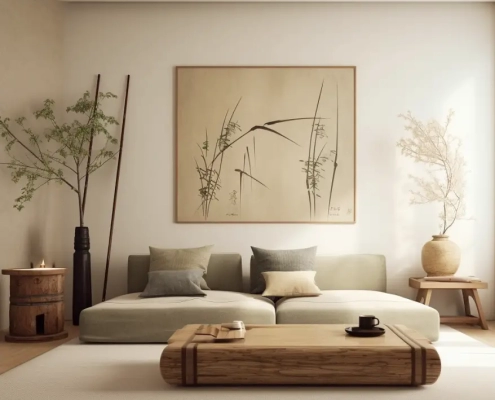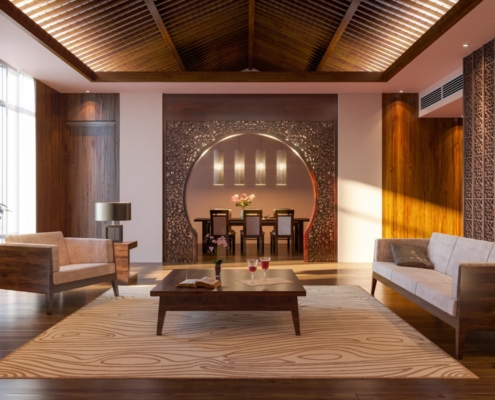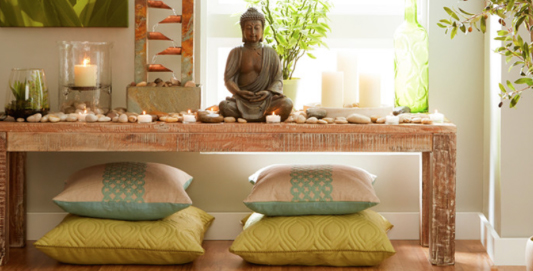Impact Interior Design Tips for Creating a Zen Oasis: Ancient Asian Philosophies for Stress Reduction and Harmony
In a world where stress seems to be an inevitable part of daily life, finding sanctuary within our own homes becomes increasingly essential. Asian interior design principles offer a profound approach to transforming our living spaces into tranquil havens that promote relaxation, balance, and harmony. Drawing from centuries-old practices such as Feng Shui and Zen philosophy, we can cultivate environments that appeal to the eye and nurture our well-being on a deeper level.
The Essence of Feng Shui
Feng Shui, originating from ancient China, is a practice centered around creating harmony between individuals and their environment. At its core, Feng Shui seeks to balance the flow of energy, known as Qi, within a space to promote health, wealth, and happiness. By adhering to Feng Shui principles, we can optimize the layout and arrangement of furniture, decor, and even colors to enhance the positive energy flow in our homes.
/
Key Feng Shui Elements to Consider
Decluttering
A cluttered space can obstruct the flow of energy, leading to feelings of stress and stagnation. Adopting minimalist practices and keeping our surroundings tidy can create a sense of openness and clarity.


Natural Light
Maximizing natural light sources brightens a room and invigorates positive energy. Consider incorporating sheer curtains or blinds that allow sunlight to filter through while maintaining privacy.
Balanced Layouts
Arrange furniture in a way that promotes a smooth flow of movement throughout the space. Avoid blocking pathways or placing sharp-edged furniture directly facing doorways, as this may disrupt the flow of Qi. This is why you’re likely to see beds facing doorways in both our interior designs and staging
Principles of Zen Interior Design
Incorporating Zen Minimalism Zen philosophy, rooted in Japanese tradition, emphasizes simplicity, mindfulness, and the appreciation of the present moment. Zen interior design embraces minimalism, prioritizing clean lines, uncluttered spaces, and a sense of tranquility. By adopting a Zen-inspired aesthetic, we can create environments that promote serenity and mental clarity.
Simplicity
Keep décor minimalist and clutter-free, focusing on quality over quantity. Choose furnishings and décor pieces that serve a purpose while maintaining a sense of aesthetic harmony.
Neutral Color Palette
Opt for soothing, neutrals such as white, beige, and soft earth tones to create a serene atmosphere. These hues evoke a sense of calmness and balance, perfect for promoting relaxation and mindfulness. Greens, in soft shades like sage, pale olive, and celery, work beautifully as neutrals, as well.


Mindful Living Spaces
Designate areas within your home for specific purposes, such as a meditation corner, a reading nook, or a space for yoga practice. These dedicated spaces serve as reminders to prioritize self-care and mindfulness in our daily lives.
Texture and Sensory Experience
Incorporate tactile elements such as smooth stones, plush rugs, or soft cushions to engage the senses and create a cozy, inviting ambiance. Pay attention to the tactile qualities of materials used in your decor to enhance the overall sensory experience.
Immerse Yourself in Harmony and Well-Being
By integrating Feng Shui principles and Zen aesthetics into our home interiors, we can cultivate environments that support our physical, mental, and emotional well-being. Beyond mere aesthetics, these practices encourage us to cultivate mindfulness, intentionality, and a deeper connection with our surroundings. Whether it’s arranging furniture to optimize energy flow, embracing minimalism to declutter our minds, or creating serene spaces for contemplation, Asian interior design offers timeless wisdom for transforming our homes into sanctuaries of peace and harmony.
If adding a touch of Asian philosophy to your world sounds appealing, our designers can help!


